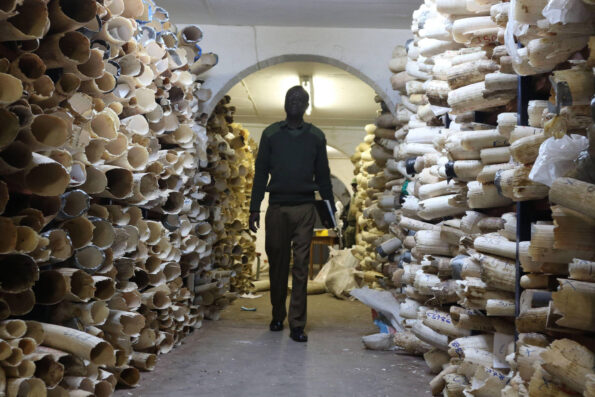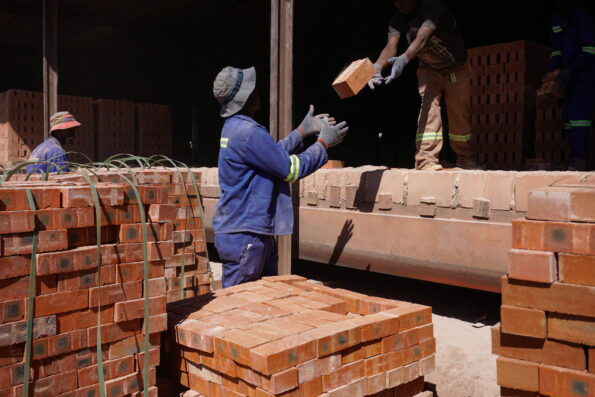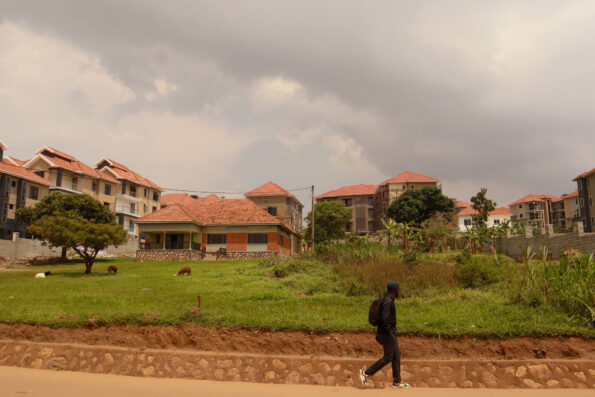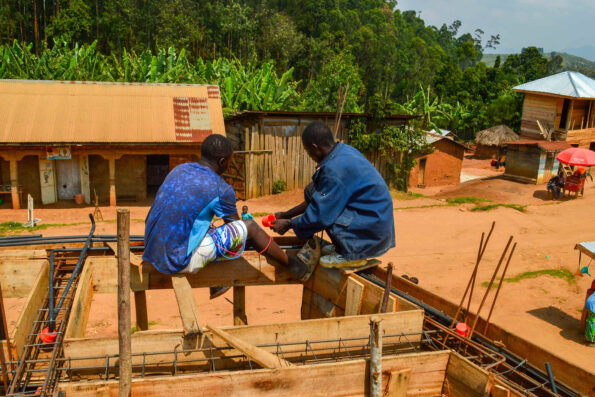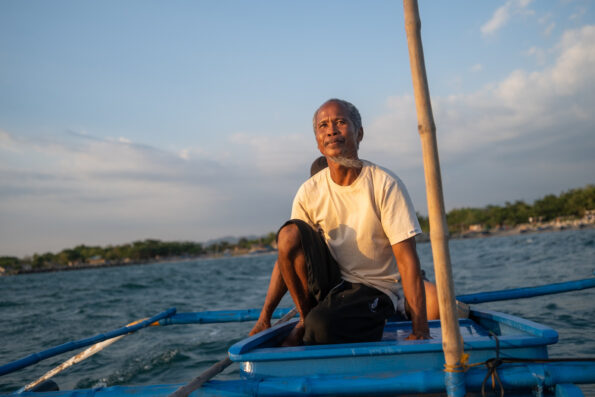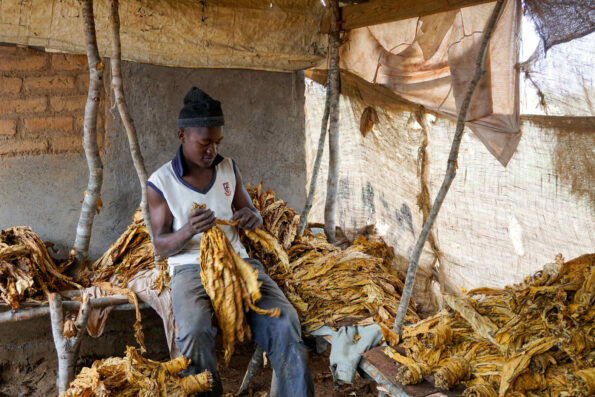
BANGALORE, INDIA – Shreya Shresht, 22, moved to Bangalore, a city in southern India, to work as a software engineer trainee. She says it’s been challenging moving away from her family and home state of Jharkhand in northwestern India.
“When I was staying with my parents, I had lesser responsibilities,” she says. “It felt protective, as if living in a shell.”
Family culture in India has long been patrilineal. The extended family relationship is central to family life as family groups work, eat and worship together.
While she misses that structure, Shresht says living alone has forced her to become more responsible.
“I feel responsible for my own life,” she says. “Apart from the independence and exposure, I feel more responsible, mainly for judging between good and bad people all by myself.”
She says that moving away from her family has also made her feel cut off. She goes most of the year without seeing them. When she gets married one day, she says she will see them even less.
“I get to meet my parents after six months, and after my marriage I will be more away,” she says.
She is sad that she couldn’t work closer to home and live with her parents. She says she misses their guidance while adjusting to new people in the society and office.
“We have to make our own decisions,” she says.
Researchers say that India is undergoing a historic urbanization that will transform the country economically, culturally, politically and environmentally. As a part of this phenomenon, many young people are relocating to new cities for more education and employment opportunities. Although they recognize the potential for growth, they also say it is difficult to adjust to living away from their families and communities. The government and other organizations are working to help the country adjust to this urbanization.
India’s urban population is expected to increase by 500 million people between 2011 and 2050, according to the Indian Institute for Human Settlements, a national education institution committed to the equitable, sustainable and efficient transformation of Indian settlements. This means that more than half of the country’s population will live in cities by the middle of this century.
“India will thus make a historic transition from a largely rural and agrarian society to one that is predominantly urban,” according to the institute’s findings. “This will be more than just an economic transition: it will result in the transformation of Indian society, its culture, its politics, and the country’s natural and built environment.”
Jessica Seddon Wallack, head of research at the Indian Institute for Human Settlements, says that natural urban population growth – such as new births – is a more dominant factor in this urbanization than the migration of people to cities.
Natural population growth has contributed to 60 percent of urban population growth during the last 30 years, according to the institute’s 2011 evidence report. Rural to urban migration – the second leading factor – has accounted for 20 percent.
But the report also cites emerging trends that suggest that this might be changing. The net migration share in urban growth rose to 24 percent during 2001 to 2011 – up from 21 percent during the previous decade. Meanwhile, the natural population growth share in cities dropped from 59 percent to 44 percent between these decades because of dropping birth rates.
Wallack says that sometimes families send one family member to a city, where there are more work opportunities, to earn a strong income. They make more money than their parents used to earn and send remittances home to their families. She says that the excitement of a new place and culture is also a draw for young professionals.
Yet there are also challenges in terms of adjustment.
Nina Nair, chief people officer at the Indian Institute for Human Settlements, says that India is divided into four grids – north, south, east and west – each which have their own culture, customs, food, language and infrastructure. She says that migrating to a different grid poses an adjustment challenge. Work culture is also different, as is transportation during the commute and safety.
Madhuchanda Paul, 25, works as a senior executive in ad sales in Bangalore. She says that moving away from her family’s home in Meghalaya, one of the smallest states in India, to Bangalore for work was not easy.
“On one hand is the emotional void and the lack of a support system,” she says. “And on the other, each day is a struggle for survival. Living in an alien city is not easy. You are at the end of the day an outsider.”
She pauses thoughtfully.
“Even financially, it is not that lucrative, as the big cities are becoming expensive by the day,” she says. “The only positive I can see is the career growth.”
After another long pause, she raises her eyebrows.
“Question is, then, how good is the deal?”
She says that young people have to weigh the pros and cons.
“It is never easy to let go of your cushion and take on a challenge,” she says. “But if the end result is fulfilling, it is worth it.”
Ankur Yadav, 26, works at an institute in Delhi training others in Systems, Applications and Products, a data processing system. Originally from Uttar Pradesh, a state in northern India where he lived with his family, he says there is a lot to adjust to in his new city.
He says that affording housing is one challenge for young professionals. He shares a room in an apartment with several other young men in Delhi.
“Sometimes students who can’t afford to spend more for staying outside land up staying in unhygienic places,” he says. “They live in tiny and cramped places, where doing studies is difficult.”
He says there is no eating facility in the apartment and that he doesn’t have time to cook.
“Eating is one of the major problems,” he says.
He says that eating out in local hotels is expensive and sometimes unhygienic. On the other hand, getting a maid to cook is also expensive, and the food isn’t tasty.
“Commuting is another hassle in new place,” he says.
Back home, he would use a bicycle, a scooter or a motorbike.
“People usually have a two-wheeler at home, which helps in traveling,” he says. “However, in new cities, we have to take a bus or auto to reach the destination.”
He says it annoys him that many times the bus and the car drivers in the big city can’t give him directions to reach new destinations on time, especially for job interviews.
At the same time, he also recognizes the opportunity for growth by overcoming these challenges.
“But, new urban place gave me new atmosphere and new lifestyle,” he says.
He says he is happy that the city offers more education and job prospects than the little place where he came from.
“I also made new friends and could learn a lot from them,” he says.
Still, his parents worry about him, as they are not used to having their son away from home.
“My parents are always worried about my security,” he says. “They always worry if I am safe, whether I have sufficient money, whether I am in bad company, whether I have taken up any addictions.”
Shailesh Kumar, 23, is an engineering student living in Delhi.
“I shifted to Delhi in search of job,” he says.
Kumar, who used to live with his family back in his home state of Jharkhand, says that living on his own has caused him to learn how to be more self-reliant.
“Earlier, help would come in from family members or relatives,” he says. “However, now I have to figure out all by myself.”
Kumar rejoices in the independence and says it has also helped him in time management.
“However, last year when I was suffering from dengue fever, I was all alone,” he says. “I had no family member by my side.”
At the same time, new cities means new friends, Kumar says.
“But I am careful while choosing my friend, as I do not want to fall into bad company,” he says.
Nair says that sometimes people who migrate from the same area live together in their new cities. Away from their families and towns, the people’s similar backgrounds can help mitigate the new cultural challenges.
Wallack says that exposure to different cultures in new cities leads to more open minds. She says that high-quality education systems can help the rest of society evolve as quickly in order to prepare young people, not just to work, but also to adapt to new living environments.
The Ministry of Urban Development launched the Jawaharlal Nehru National Urban Renewal Mission at the end of 2005 to improve urban infrastructure, service delivery mechanisms, community participation and accountability of parastatal agencies to citizens. In its final year, the mission is the government’s single largest initiative for planned development of cities and towns.


